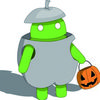本文详细介绍了CSS定位学习的基础概念和应用方法,涵盖静态、相对、绝对、固定和粘性定位的详细讲解,并通过实例解析了如何使用CSS定位实现固定头部导航条、图片悬停效果和弹出框效果。通过掌握这些定位技巧,可以实现网页元素的精确布局和丰富交互效果。CSS定位学习对于网页开发者来说是必不可少的技能。
CSS定位基础概念
什么是CSS定位
在网页设计中,CSS定位是一种用于控制元素在页面上位置的技术。通过使用定位属性,网页开发者可以精确地指定元素的位置,实现布局的灵活性和复杂性。定位属性允许元素脱离文档流,从而实现更复杂的布局效果。
CSS定位有多种方式,包括静态定位、相对定位、绝对定位、固定定位及粘性定位。每种定位方式都有其独特特性和应用场景。
盒子模型与定位
在CSS中,每个HTML元素都可以被视为一个盒子,包含四部分:内容区域、内边距(padding)、边框(border)和外边距(margin)。盒子模型是理解CSS定位的基础。
盒子模型的结构如下:
- 内容区域:实际展示内容的区域。
- 内边距(padding):内容区域与边框之间的空白区域。
- 边框(border):围绕内容区域和内边距的线条。
- 外边距(margin):元素与页面其他元素之间的空白区域。
在定位元素时,盒子模型的概念非常重要。例如,当一个元素设置为position: absolute;时,它会相对于最近的已定位祖先元素(即position不是static的元素)定位。如果元素的祖先元素没有被定位,那么该元素将相对于浏览器窗口定位。
盒子模型代码示例
<div style="position: relative; padding: 10px; border: 1px solid black; margin: 10px;">
<div style="background-color: lightblue; padding: 20px; border: 1px solid black;">
This div is positioned within its parent container.
</div>
</div>定位元素的主要作用包括:
- 精确布局:通过定位属性,可以精确控制元素的位置,实现复杂的布局效果。
- 弹出效果:使用定位属性,可以实现弹出框或其他悬浮在页面上的效果。
- 导航栏固定:利用固定定位,可以将导航栏固定在页面顶部,无论用户滚动页面,导航栏始终保持可见。
- 悬停效果:通过绝对定位和悬停效果,可以实现图片或其他元素在悬停时展示更多信息。
常用定位方法介绍
static定位
static是元素的默认定位方式。在这种情况下,元素按照正常的文档流排列,不使用top、right、bottom、left等定位属性。
<div style="position: static; background-color: lightblue; padding: 20px;">
This div is in the normal flow of the document.
</div>relative定位
relative定位会让元素相对于它在文档中的正常位置偏移。元素的尺寸和位置仍然保持在文档流中,但可以通过top、right、bottom、left属性进行偏移。相对定位对于创建悬停效果或微调元素位置非常有用。
<div style="position: relative; background-color: lightgreen; width: 100px; height: 100px; left: 20px; top: 20px;">
This div is relatively positioned, offset by 20px from its original position.
</div>absolute定位
absolute定位会让元素相对于最近的已定位(非static)祖先元素进行定位。如果没有已定位的祖先元素,元素将相对于浏览器窗口定位。绝对定位的元素会被移出文档流,不受其他元素的影响。
<div style="position: relative; width: 200px; height: 200px; border: 1px solid black;">
<div style="position: absolute; top: 10px; left: 10px; background-color: lightcoral; width: 50px; height: 50px;">
This div is absolutely positioned.
</div>
</div>fixed定位
fixed定位使元素相对于浏览器窗口定位,不会随窗口滚动而改变位置。这种定位常用于创建固定在页面顶部或底部的导航栏。
<div style="position: fixed; top: 0; left: 0; background-color: lightgray; width: 200px; height: 50px; text-align: center;">
This div is fixed to the top-left corner of the screen.
</div>sticky定位
sticky定位是相对定位和固定定位的结合。元素在达到特定偏移值之前是相对定位的,一旦达到该值,会变成固定定位。这种定位常用于创建粘性导航栏。
<div style="position: -webkit-sticky; position: sticky; top: 0; background-color: lightsteelblue; padding: 10px;">
This div will stick to the top of the screen when you scroll down.
</div>定位属性详解
position属性
position属性定义元素的定位方式。常用的值包括:
static:元素按照正常的文档流排列。relative:元素相对于其正常位置进行偏移。absolute:元素相对于最近的已定位祖先元素进行定位。fixed:元素相对于浏览器窗口定位。sticky:元素是相对定位,直到达到特定偏移值,然后变成固定定位。
top、right、bottom、left属性
这些属性用于指定元素的定位位置,通常与position属性结合使用。
top:定义元素上边界与最近定位祖先元素或浏览器窗口顶部的距离。right:定义元素右边界与最近定位祖先元素或浏览器窗口右侧的距离。bottom:定义元素下边界与最近定位祖先元素或浏览器窗口底部的距离。left:定义元素左边界与最近定位祖先元素或浏览器窗口左侧的距离。
<div style="position: relative; width: 200px; height: 200px; border: 1px solid black;">
<div style="position: absolute; top: 50px; left: 50px; background-color: lightgoldenrodyellow; width: 50px; height: 50px;">
This div is positioned 50px from the top and left of the parent div.
</div>
</div>z-index属性
z-index属性定义了元素的堆叠顺序。值越大,元素越靠前,覆盖其他元素。z-index属性仅适用于定位元素(即position值为relative、absolute、fixed或sticky的元素)。
<div style="position: relative; width: 200px; height: 200px; border: 1px solid black;">
<div style="position: absolute; top: 50px; left: 50px; background-color: lightcoral; width: 50px; height: 50px; z-index: 1;">
This div with z-index 1 is behind the div with z-index 2.
</div>
<div style="position: absolute; top: 50px; left: 50px; background-color: lightsteelblue; width: 50px; height: 50px; z-index: 2;">
This div with z-index 2 is in front of the div with z-index 1.
</div>
</div>实例解析:如何使用CSS定位
固定头部导航条
固定头部导航条是一种常见的布局设计,可以让导航条在页面滚动时保持固定位置。
<!DOCTYPE html>
<html>
<head>
<style>
.fixed-header {
position: fixed;
top: 0;
width: 100%;
background-color: #333;
color: white;
padding: 10px;
}
.content {
margin-top: 60px;
padding: 20px;
}
</style>
</head>
<body>
<div class="fixed-header">
<a href="#">Home</a>
<a href="#">About</a>
<a href="#">Contact</a>
</div>
<div class="content">
<p>This is a long text that will scroll.</p>
<p>You can see the fixed header even when you scroll down.</p>
<!-- Add more content here -->
</div>
</body>
</html>图片悬停效果
使用相对定位和悬停效果,可以实现当鼠标悬停在图片上时显示更多信息。
<!DOCTYPE html>
<html>
<head>
<style>
.image-container {
position: relative;
display: inline-block;
width: 100px;
height: 100px;
}
.image-container:hover .image-caption {
opacity: 1;
}
.image-caption {
position: absolute;
bottom: 0;
left: 0;
width: 100%;
background-color: rgba(0, 0, 0, 0.75);
color: white;
padding: 5px;
opacity: 0;
transition: opacity 0.3s;
}
</style>
</head>
<body>
<div class="image-container">
<img class="lazyload" src="data:image/png;base64,iVBORw0KGgoAAAANSUhEUgAAAAEAAAABCAYAAAAfFcSJAAAAAXNSR0IArs4c6QAAAARnQU1BAACxjwv8YQUAAAAJcEhZcwAADsQAAA7EAZUrDhsAAAANSURBVBhXYzh8+PB/AAffA0nNPuCLAAAAAElFTkSuQmCC" data-original="https://example.com/image.jpg" alt="Image" style="width: 100%; height: auto;">
<div class="image-caption">
This is an image with a hover caption.
</div>
</div>
</body>
</html>弹出框效果
通过绝对定位和JavaScript,可以实现点击按钮时弹出框的效果。
<!DOCTYPE html>
<html>
<head>
<style>
.popup {
position: absolute;
top: 50%;
left: 50%;
transform: translate(-50%, -50%);
background-color: #fff;
padding: 20px;
border-radius: 5px;
box-shadow: 0 0 10px rgba(0, 0, 0, 0.2);
display: none;
}
.popup-trigger {
position: relative;
padding: 10px;
cursor: pointer;
}
.popup-trigger:after {
content: ">";
position: absolute;
right: 10px;
}
</style>
</head>
<body>
<div class="popup-trigger" onclick="togglePopup()">
Click me to open popup
</div>
<div class="popup" id="popup">
<p>This is a popup box.</p>
<button onclick="togglePopup()">Close</button>
</div>
<script>
function togglePopup() {
var popup = document.getElementById('popup');
popup.style.display = popup.style.display === 'none' ? 'block' : 'none';
}
</script>
</body>
</html>常见问题解答
定位元素未生效的原因
定位元素未生效的原因可能包括:
- 父元素没有设置定位属性(
position),导致子元素无法相对于父元素定位。 - 使用了不正确的定位属性(如
position: relative;但没有设置top、right、bottom、left属性)。 - 使用了
fixed或absolute定位,但没有设置偏移值(top、right、bottom、left)。
不同定位方式的区别与应用
- static:元素按照正常文档流排列,不使用偏移值。
- relative:元素相对于其正常位置偏移,但仍然保持在文档流中。
- absolute:元素相对于最近的非
static祖先元素定位,脱离文档流。 - fixed:元素相对于浏览器窗口定位,不随滚动条移动。
- sticky:元素在达到特定偏移值之前是相对定位,一旦达到该值变成固定定位。
如何解决定位过程中遇到的问题
- 确保父元素设置了定位属性(如
position: relative;)。 - 检查偏移值(如
top、right、bottom、left)是否正确设置。 - 使用浏览器的开发者工具(如Chrome的开发者工具)检查元素的实际位置和偏移值。
- 确保没有冲突的CSS规则影响元素的定位。
总结与进阶学习建议
CSS定位的总结
CSS定位是一种强大的工具,用于精确控制网页元素的位置。通过使用position属性和相关的偏移属性(如top、right、bottom、left),可以创建复杂的布局效果,如固定导航条、悬停效果和弹出框等。定位属性包括static、relative、absolute、fixed和sticky,每种方式都有其独特的应用场景。
推荐的进阶学习资源
以下是一些推荐的资源,帮助你进一步学习CSS定位:
- 慕课网:提供丰富的CSS课程,包括基础和高级教程。
- W3Schools:在线教程和参考手册,非常适合初学者和中级开发者。
- MDN Web Docs:Mozilla提供的详尽文档,深入介绍CSS定位的各种细节。
- CSS Tricks:博客和教程,提供实用的CSS技巧和案例分析。
通过不断练习和参考这些资源,你可以进一步掌握CSS定位技术,为复杂的网页布局提供支持。
共同学习,写下你的评论
评论加载中...
作者其他优质文章





